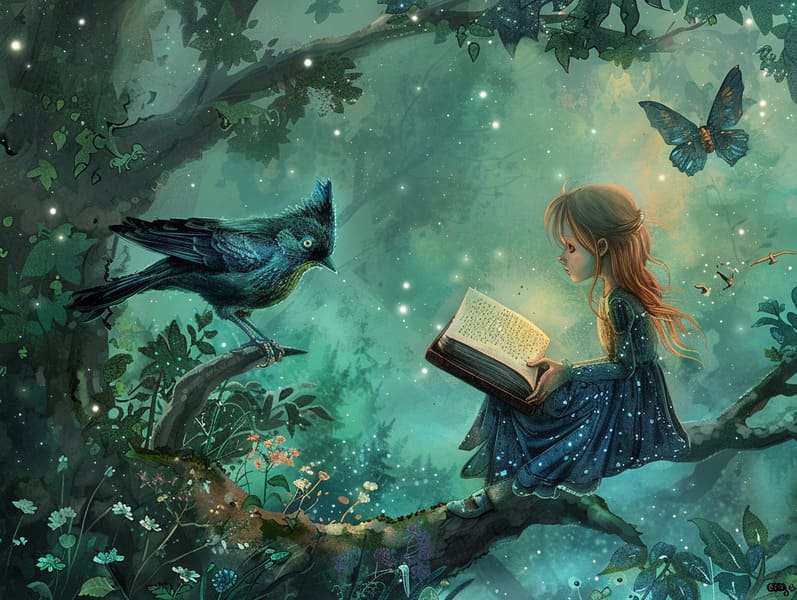The Rise of Bedtime Fairy Tales with the Eternal Magic.
The Rise of Bedtime Fairy Tales with the Eternal Magic.
Blog Article

Popular fairy tales have long histories. These stories have been transmitted from one generation to the next centuries before they were ever recorded. They sprang from a variety of societies, including Western traditions. They were initially told among adults, often carrying themes and messages reflective of the societal norms and beliefs of the time.
The Grimm brothers, Jacob and Wilhelm Grimm, were among the first to gather and publish many of these beloved narratives. Their published works, "Grimm's Story Collection," included classics like "Cinder Maid," "Hansel and Gretel," and "Little Snow White," which have since become hallmarks in the world of beloved fairy tales. Similarly, the Danish author's fantastical narratives, such as "The Sea Maid," and "The Story of the Ugly Duckling," have touched hearts worldwide, establishing their place in the pantheon of treasured fairy tales.
Even though they are old, classic fairy tales remain as impactful as ever, especially as nighttime stories for kids. These enchanting tales are now available in multiple formats, including beautifully illustrated books, enchanting animations, and internet fairy tales.
Their lasting appeal can be connected to several charming aspects:
Moral Lessons: Ancient fairy tales often convey important moral lessons. Narratives like "The Wolf and the Liar" teach the merit of integrity, while "The Story of the Tortoise and the Hare" exemplify the merits of determination and meekness. These tales offer young ones clear distinctions between good and bad, helping to shape their moral compass in a mild yet significant way.
Warmth and Understanding: Fairy tales frequently present characters facing difficulties and adversities, provoking audiences to identify with their struggles and root for their triumphs. For instance, "Beauty's Beast" points out the necessity of looking past the exterior to know the true character of a character, cultivating warmth and comprehension.
Cultural Appreciation: Many fairy tales are interwoven with the cultural contexts from which they bloomed. Immersing in these narratives can provide enlightening views into different cultures, encouraging a sense of cultural insight and knowledge.
Creativity and Fantasy: The imaginative elements in classic fairy tales—enchanted objects—enliven children’s creative minds. These fairy tales move readers to supernatural realms, activating innovative dreams and a sense of fascination that remains a lifetime.
Traditional fairy tales are not only magical but also pedagogical. They provide mesmerizing tools in promoting various thinking and feeling skills in kids. When traditional fairy tales are spoken out loud, they improve linguistic abilities by bringing new terms and sophisticated sentence structures. This practice also nurtures auditory skills and mental focus, as the young concentrate deeply, eager to see what happens next.
Furthermore, examining the themes and characters of fairy tales can foster cognitive skills and cognitive skills. Kids are led to discern patterns, predict happenings, and figure out cause and effect. These explorations also help kids convey their thoughts and feelings, nurturing their emotional intelligence.
In today’s technological era, the prevalence of internet fairy tales has made these stories more obtainable than ever. check it out Internet resources and web apps extend comprehensive collections of famous fairy tales that can be seen or listened through anytime, anywhere. Fairy tales voiced are particularly in demand, presenting an interactive method for little ones to engage with these alluring stories. Audio stories and narrated videos guide characters and settings to life, often joined by bewitching audio effects and songs that intensify the tale journey.
The timeless fascination of traditional fairy tales lies in their ability to shift to today's world while maintaining their basic principles. Contemporary retellings of these narratives often include more different characters and modern settings, making them relatable to today’s audience. However, the fundamental themes of fearlessness, charity, and righteousness remain unchanged, continuing to resonate with audiences of all ages.
Timeless fairy tales also offer a sense of serenity and closeness. They confer upon a structured narrative with a unmistakable beginning, middle, and end, often wrapping up with the conclusion of conflicts and the triumph of honesty over deceit. This regularity can be heartening for little ones, bringing a sense of firmness in an always shifting world.
Classic fairy tales continue to fascinate and teach new generations, maintaining their splendor and meaningfulness in modern society. As kids' bedtime tales, they furnish a perfect blend of delight and instruction, developing moral values, empathy, and creativity. The proliferation of free fairy tales online and the prevalence of fairy tales narrated confirm that these old fairy tales remain obtainable to new generations.
By protecting and recounting these tales, we continue to cherish the rich tapestry of myths and cultural heritage. Whether you are experiencing a richly illustrated book, discovering a digital collection, or playing an narrated book, the magic of traditional fairy tales is always within reach. These stories point out of the everlasting presence of storytelling and its ability to draw us together across epochs and places.
No matter if you are viewing a vibrantly illustrated book, delving into a virtual collection, or listening via an read-aloud story, the grace of Grimm's fairy tales is always within reach.
These fairy tales emphasize of the continued strength of storytelling and its ability to link us across generations and cultures, making a tie that enchants and educates alike.